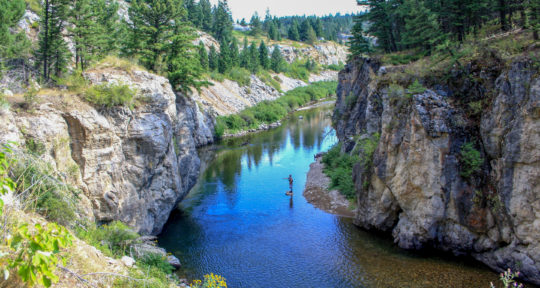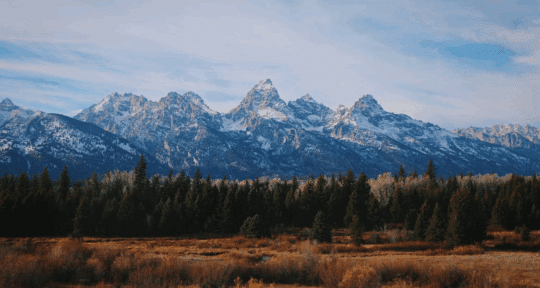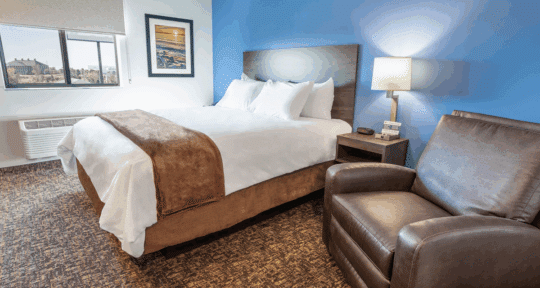Wayne Wu speeds the aluminum fishing boat toward a salmon honey hole in southeast Alaska. In the back, I’m bundled up with three other women against the gray, chilly morning, ready for our second day of angling for king salmon, coho salmon, halibut, and lingcod. Wu, our guide, chatters over the radio with other guides in the area on what’s biting and how big the catches are. “Alright, guys, tell me something good,” he says over the radio.
Very rarely has Wu seen women arrange a fishing adventure on their own. Many of the women who visit Steamboat Bay Fishing Club, where he works as a guide, are there with their husbands or male family members. But when women do fish, they tend to fare better than the men, according to Wu. “I don’t know what it is about the ladies, but even the female employees here out-fish the guys, I don’t know if they have a vibe or something,” he says.
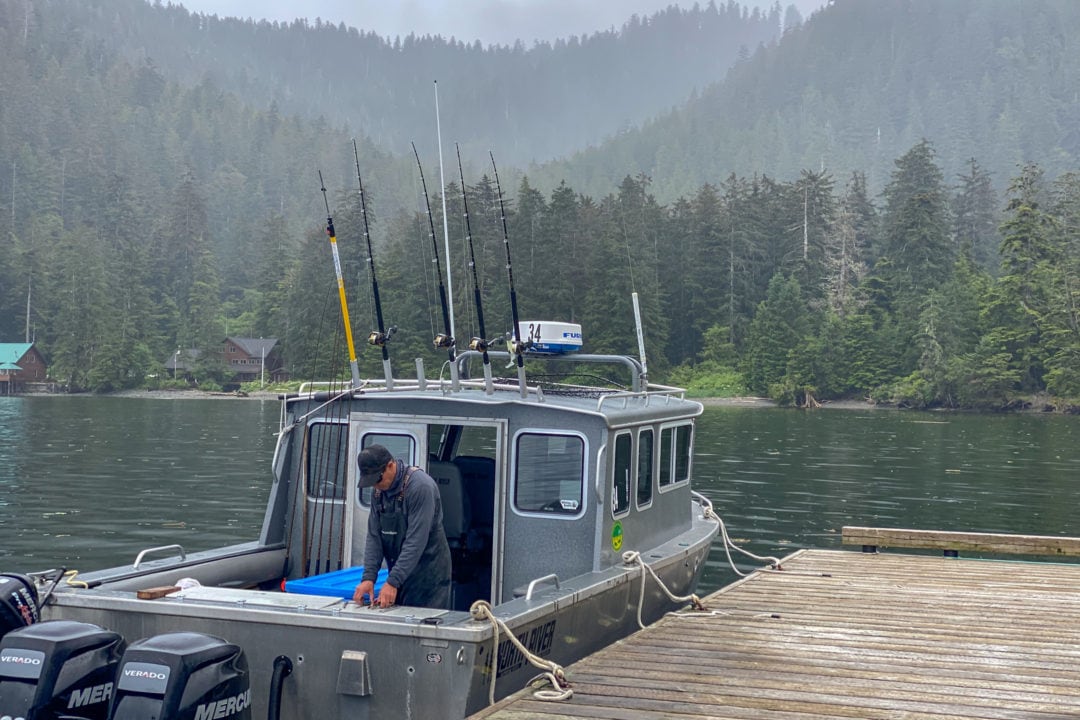
As the fastest-growing demographic in fishing, more and more women are sinking stereotypes in the male-dominated sports of competitive and recreational fishing.
Catching a king
The women on this trip are not alone in choosing fishing as an activity fit for socially distancing; fishing licenses are on the rise nationwide as home-weary residents search for a way to get outdoors safely while also providing food for their families. The surge is good news to the recreational fishing industry, which is also looking to snag more enthusiasts among women and minorities.
While each of us has fished before, we are far from experts. None of us has caught a salmon before—especially the large, shimmering king salmon—and it’s our first time casting lines into the ocean waves of Alaska’s Inside Passage.
As guests of Steamboat Bay Fishing Club, a luxury sport-fishing resort located on Noyes Island near Ketchikan, we are on a quest to reel in the kings—and, secretly, to out-fish the other resort guests, most of whom are male. The resort offers amenities such as massages and a hot tub, but it’s the lure of pulling in a 28-inch king salmon that attracts people to the lodge.
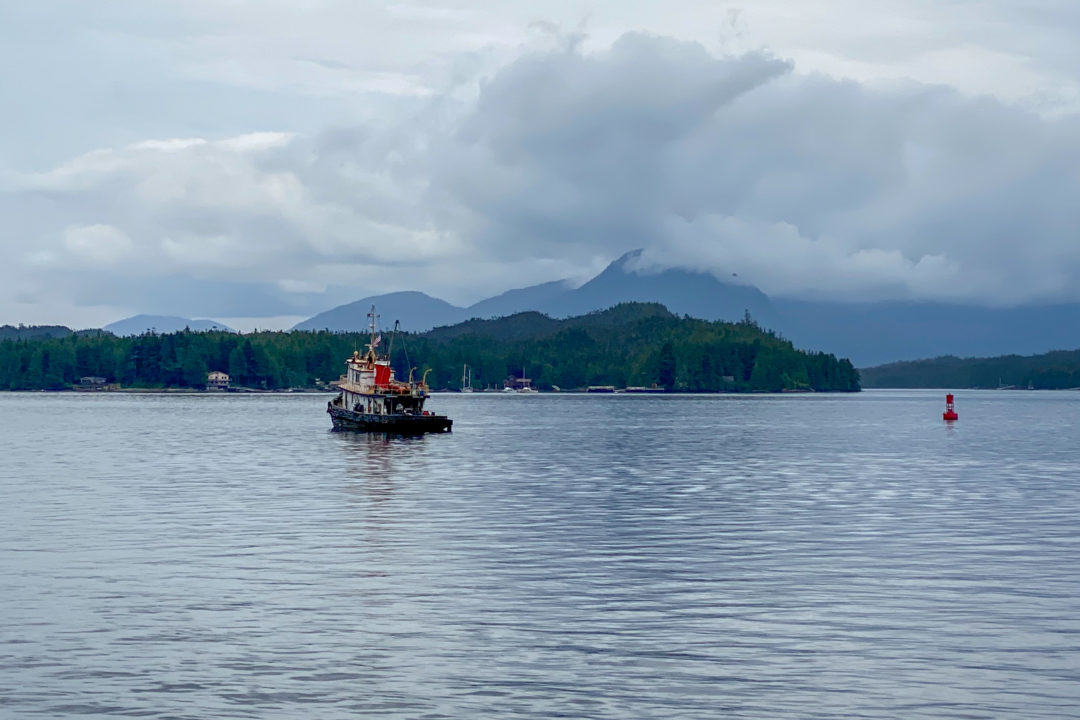
Reel fast
Wu takes us to a calm bay to teach us how to use the fishing gear and get familiar with “mooching,” or dropping the hook weighted with chunks of salted herring using the depth counter on the reel. As soon as you hit the depth you want, you reel the bait in quickly, causing the herring to spin in a way that mimics a real fish in distress. If you don’t get a bite, you do it again and again until you do.
“Reel faster,” Wu says. “If it’s not spinning, you’re not fishing.”
According to the American Sportfishing Association’s 2018 Sportfishing in America report, 49 million people “escape to cast a line or drop a hook in hopes of reeling in a fish” each year. Although that number may seem high, so is the number of people leaving the sport, a trend referred to as “the leaky bucket.” While 9.4 million Americans started fishing or returned to the activity between 2017 and 2018, a nearly equal amount left. COVID-19 changed all that.
In 2020, residents in Louisiana purchased thousands more fishing licenses during the first month-and-a-half of the state’s COVID-19 stay-at-home order than they did during the same time period in 2019. For the month of April alone, sales of basic fishing and saltwater licenses far exceeded those of the past three Aprils.
Texas saw a 39 percent increase in license sales compared to the same month last year, and Michigan, Iowa, and Vermont reeled in record numbers of new fishing licenses during the months of March and April as well. Vermont alone saw a 50 percent increase in resident fishing licenses.
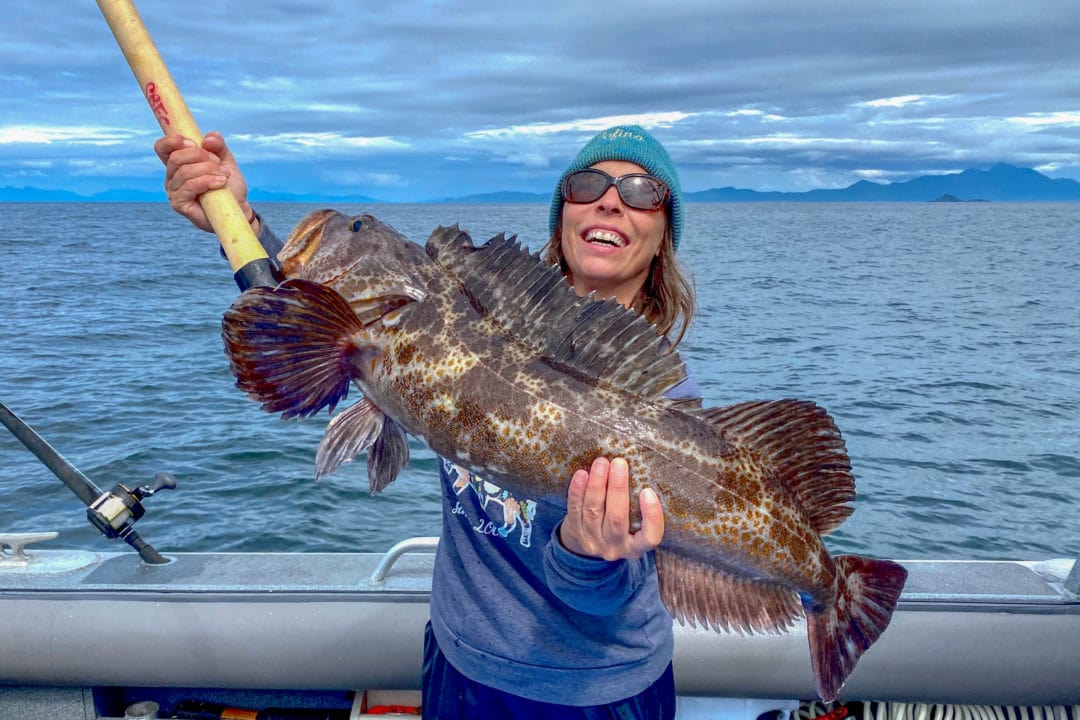
But efforts to attract more women to the sport were sparked well before the COVID-19 pandemic began. In 2016, the Recreational Boating and Fishing Foundation announced a “60 in 60” goal, aiming to increase yearly angler participation to 60 million in 60 months. As part of that goal, RBFF also introduced Making Waves, a 2018 initiative designed to empower women and girls to “rock the boat”—with a fishing rod in hand.
The program’s goal is to try to remove perceived barriers to the sport, increase the representation of women in fishing, and introduce a series of angling workshops specifically designed for women and girls. Research by RBFF shows that kids are more likely to go fishing with their mom—a direct contradiction of the idea that fishing is strictly a boys’ club. Yet, a 2017 study revealed that only 19.3 percent of women and girls said they felt represented in fishing.
“Despite this perceived lack of representation in the sport of fishing, 45 percent of last year’s new fishing participants were female, and that number continues to grow,” said Stephanie Vatalaro, vice president of communications for RBFF, in 2018. “With this campaign, we’re creating spaces for women out on the water.”
Women on the water
Alaska relies heavily on the sportfishing charter business from tourists. Last year, nearly 300,000 Alaska visitors bought temporary sportfishing licenses, according to the Alaska Department of Fish and Game. But an informal poll by the Alaska Charter Association found that the majority of charter businesses saw bookings fall by at least half due to COVID-19 restrictions.
My three female angler buddies and I are an exception. With negative COVID-19 test results in hand—required to enter Alaska without facing a quarantine—we came seeking an adventure deep in the wilderness and, more importantly, away from the crowds.
Alaska’s island-filled Inside Passage area is perfect for socially distancing. Remote and surrounded by water, Noyes Island is a private island of volcanic-formed tree-topped mountains. The fishing boat holds only the four of us and Wu. Humpback whales spray towering puffs of water into the area—fishing the same waters we are—and despite other boats around us, the vast magnificence of the area makes it feel as if we’re totally alone.
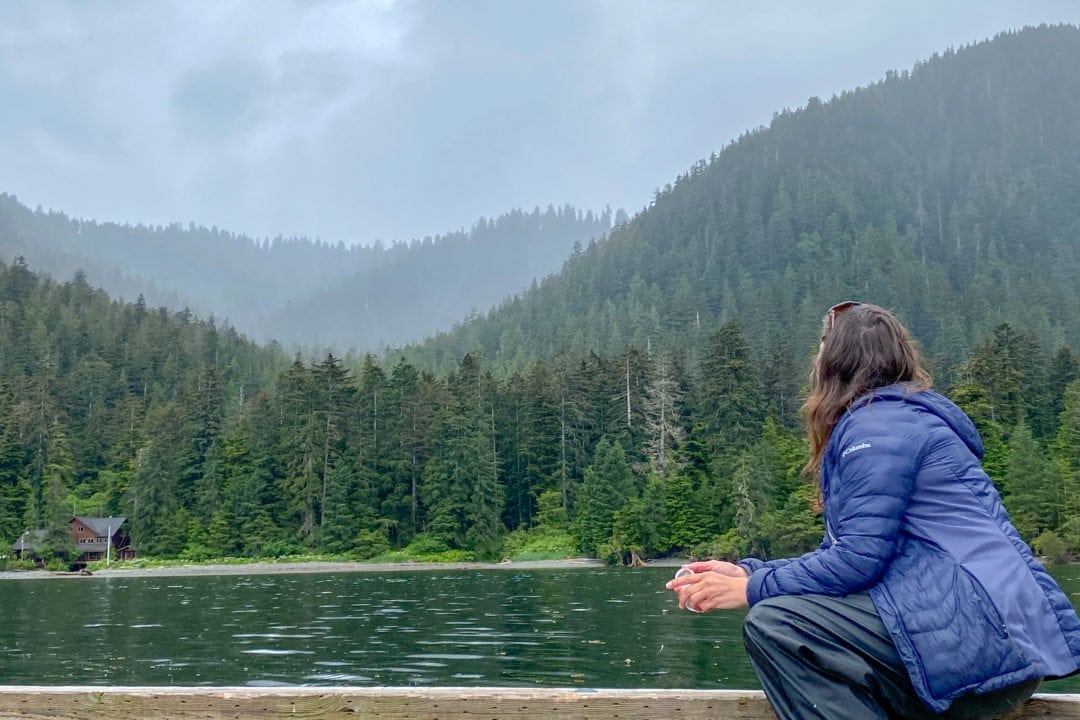
When a salmon or halibut hits, the pull is dramatic. Once the fish gives the initial tug, waiting for it to swallow is key to locking it in before the battle between reel and fish begins. Halibut is our first catch of the day. Flat and brown with those odd same-side eyes, it’s surprisingly heavy to pull up. The fish flattens its body in a way that makes it feel like I’m hauling up a wet floor mat from the ocean depths.
Coho and king salmon are fighters. They swim from one side of the boat to the other, leaping out of the water in rage until we reel them close enough so that Wu can scoop them into a net.
The RBFF’s annual report showed that female participation in fishing reached an all-time high for fiscal year 2020, with 17.9 million women fishing. Corporate sponsors are now also jumping on board to support women on the water. Remote and exclusive fishing lodges are capitalizing on the growing interest among women anglers, with resorts like Steamboat Bay offering more amenities than a typical fishing camp normally would.
After 10 hours of fighting salmon on a boat, the massages at the end of the day are a welcome relief to our tight, sore muscles. I return home from Alaska with 40 pounds of salmon, halibut, and lingcod filets, plus a powerful new confidence in my fishing ability. After months of social isolation in the city, being in Alaska was a welcome respite—and I’m now one of the thousands of women in the U.S. who bought a fishing license this year.


